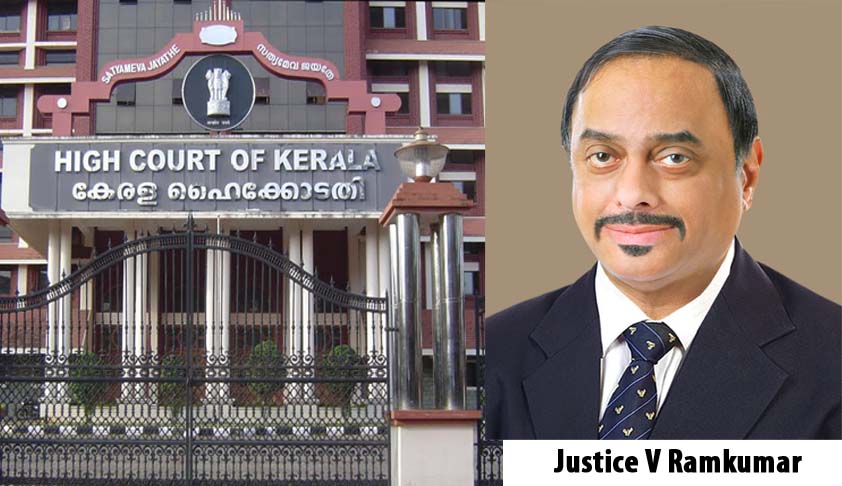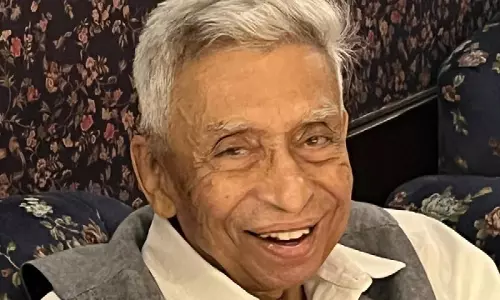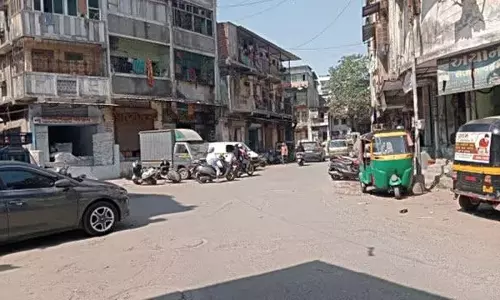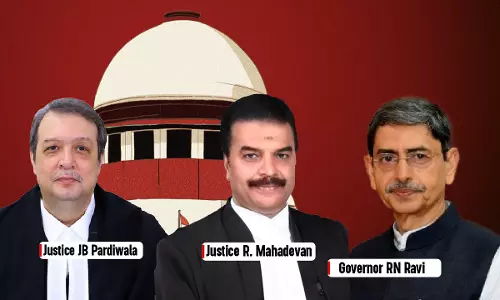The Artificial distinction Judicially attempted between a “Complaint” U/S 2 (d) Cr.P.C. and a “Complaint of Facts Constituting the Offence” U/S 190 (1) (A) Cr.P.C

According to a learned Judge of the High Court of Kerala (Vide Oommen Chandy v. State of Kerala - 2016 (3) KHC 621), in order to enable a Magistrate/Special Judge to order investigation under Section 156 (3) Cr.P.C., there should not only be a “complaint” but such complaint should also be a “complaint of facts constituting the offence” within the meaning of Section 190 (1) (a) Cr.P.C....
According to a learned Judge of the High Court of Kerala (Vide Oommen Chandy v. State of Kerala - 2016 (3) KHC 621), in order to enable a Magistrate/Special Judge to order investigation under Section 156 (3) Cr.P.C., there should not only be a “complaint” but such complaint should also be a “complaint of facts constituting the offence” within the meaning of Section 190 (1) (a) Cr.P.C. In other words, according to the Judge, it is not enough that such complaint answers the definition of “complaint” under Section 2 (d) Cr.P.C. This is what the learned Judge has observed:-
“22. As per Section 156 (3) Cr.P.C. “any Magistrate empowered under Section 190 Cr.P.C., may order such an investigation as above mentioned”. As per Section 190 (1) (a) Cr.P.C., any Magistrate of the first class, may take cognizance of any offence upon receiving a “complaint of facts which constitute such offence”. A 'complaint' within the meaning of Section 190 (1)(a) Cr.P.C. has an additional qualification that such a 'complaint' should be “a complaint of facts which constitute such offence”.
“Complaint” is defined under Section 2 (d) Cr.P.C. as “any allegation made orally or in writing to a Magistrate, with a view to his taking action under this Code, that some person, whether known or unknown, has committed an offence, but does not include a police report”. Therefore, the complaint within the meaning of Section 2 (d) Cr.P.C. should be any allegation made orally or in writing to a Magistrate and the same should be with a view to his taking action under the Code, and that the allegation should be that some person has committed an offence.
At the same time, the 'complaint' within the meaning of Section 190 (1) (a) Cr.P.C. should be such “a complaint of facts which constitute such offence”. Only then, a Magistrate is empowered to order an investigation under section 156 (3) Cr.P.C. A 'complaint' within the meaning of Section 190 (1) (a) Cr.P.C. should not be a mere 'complaint' within the meaning of Section 2 (d) Cr.P.C. alone; whereas, such a 'complaint' should be 'a complaint of facts which constitute such offence'. Mere averments or allegations cannot be considered as facts which constitute an offence. The allegations in the complaint should contain “facts which constitute the offence”. Mere allegations or averments cannot constitute 'facts'.
'Fact' is defined in the Indian Evidence Act, 1872 as,
“Fact” means and includes-
(1) any thing, state of things, or relation of things, capable of being perceived by senses;
(2) any mental condition of which any person is conscious;
By applying the said principle, it cannot be said that the mere allegations raised by the complainant in Ext. P1 complaint do not contain facts which constitute any of the offences.
For getting the power under Section 156 (3) Cr.P.C. a Magistrate invoking the complaint should not be a mere 'complaint' as defined under Section 2 (d) Cr.P.C.; whereas it requires some additional qualification also. It should be 'a complaint of facts which constitute an offence'. Therefore, such a 'complaint' should be something more than what is required to constitute a 'complaint' under Section 2 (d) Cr.P.C. Something styled as a complaint in which matters of merely hearsay have been narrated as the one in this case cannot be treated as a complaint of facts which constitute the offences”.
Close to the heels of Ommen Chandy the learned Judge has again stuck to the same view in a subsequent verdict (vide- para 22 of Muralidharan V Vs. V.A. Kumaran & Another (2016 (3) KHC 845 )
I am afraid that the learned Judge has misconstrued the scope of Sections 156 (3) and Section 190 Cr.P.C. Even though investigation by the Police under Section 156 (3) Cr.P.C., is usually ordered by Magistrates on receiving a complaint (i.e. private complaint), Section 156 (3) Cr.P.C. does not even use the expression “complaint”. The reference to Section 190 Cr.P.C. in Section 156 (3) Cr.P.C. is only to ensure that investigation under the latter section is ordered only by a Magistrate empowered under Section 190 Cr.P.C. This means that the Magistrate of the first Class or a Magistrate of the second class specially empowered by the Chief Judicial Magistrate under Section 190 (2) Cr.P.C. alone can exercise power under Section 156 (3) Cr.P.C. Section 156 (3) Cr.P.C. does not even insist that for ordering investigation by the police under that Section, there should be a “complaint” or that such complaint should be a “complaint of facts constituting the offence” within the meaning of Section 190 (1)(a) Cr.P.C. Even for the purpose of taking cognizance of an offence under Section 190 (1)(a) Cr.P.C., it is enough that the complaint filed answers the definition of “complaint” under Section 2 (d). Without stating the “facts” it is not possible to make an allegation that some person has committed an offence. In paragraph 11 of a three Judges Bench of the Supreme Court in Bhimappa Basappa Bhu Sannavar v. Laxman Shivarayappa Samagouda - (1970) 1 SCC 665 = AIR 1970 SC 1153, the Apex Court observed as follows:-
“The word “complaint has a wide meaning since it includes even an oral allegation. It may, therefore, be assumed that no form is prescribed which the complaint must take. It may only be said that there must be an allegation which prima facie discloses the commission of an offence with the necessary facts for the Magistrate to take action. Section 190 (1) (a) makes it necessary that the alleged facts must disclose the commission of an offence”.
Again in Mohd. Yousuf v. Afaq Jahan (Smt.) and Another (2006) 1 SCC 627 this is what the Supreme Court observed:-
“15. A faint plea was made by learned counsel for Respondent 1 that the petition filed by the appellant was not a complaint in the strict sense of the term. The plea is clearly untenable. The nomenclature of a petition is inconsequential. Section 2 (d) of the Code defines “complaint” as follows:
“2.(d) 'complaint' means any allegation made orally or in writing to a Magistrate, with a view to his taking action under this Code, that some person, whether known or unknown, has committed an offence, but does not include a police report.
Explanation:- A report made by a police officer in a case which discloses, after investigation, the commission of a non-cognizable offence shall be deemed to be a complaint; and the police officer by whom such report is made shall be deemed to be the complainant”.
There is no particular format of a complaint. A petition addressed to the Magistrate containing an allegation that an offence has been committed, and ending with a prayer that the culprits be suitably dealt with, as in the instant case, is a complaint”
At any rate, recourse to the definition of “fact” in the Indian Evidence Act, 1872 to elucidate the expression found in the Cr.P.C., both of which statutes are not pari materia, was impermissible. (Vide Ram Narain v. State of U.P. -AIR 1957 SC 178; Shri. Kumar Padma Prasad v. Union of India - AIR 1992 SC 1213; Bangalore Turf Club Ltd. v. Regional Director, ESI Corporation (2014) 9 SCC 657 at pages 685 to 689).
Incidentally, the opening sentence in paragraph 26 of the verdict in question as extracted above, besides suffering from the aforesaid misconception in law, also tends to transform the Magistrate into an inanimate object like a complaint. Judges should be doubly cautious while marking their judgments for publication in law journals. Otherwise their finished products are likely to embarrass and mislead the legal fraternity, particularly the subordinate judiciary.
Hence, I am of the opinion that the High Court was not right in pre-supposing that for the purpose of ordering investigation under Section 156 (3) Cr.P.C., there should be a “complaint”. Drawing an artificial distinction that it is not enough that such “complaint” answers the definition of a complaint under Section 2 (d) Cr.P.C. but should further be a “a complaint of facts constituting the offence”, also does not appear to be legally sound.
Justice V.Ramkumar is a Former Judge, High Court of Kerala and Chairman, Advisory Board, Kerala Anti-social Activities Prevention Act.
Views are personal of the author and does not reflect LiveLaw’s views.





